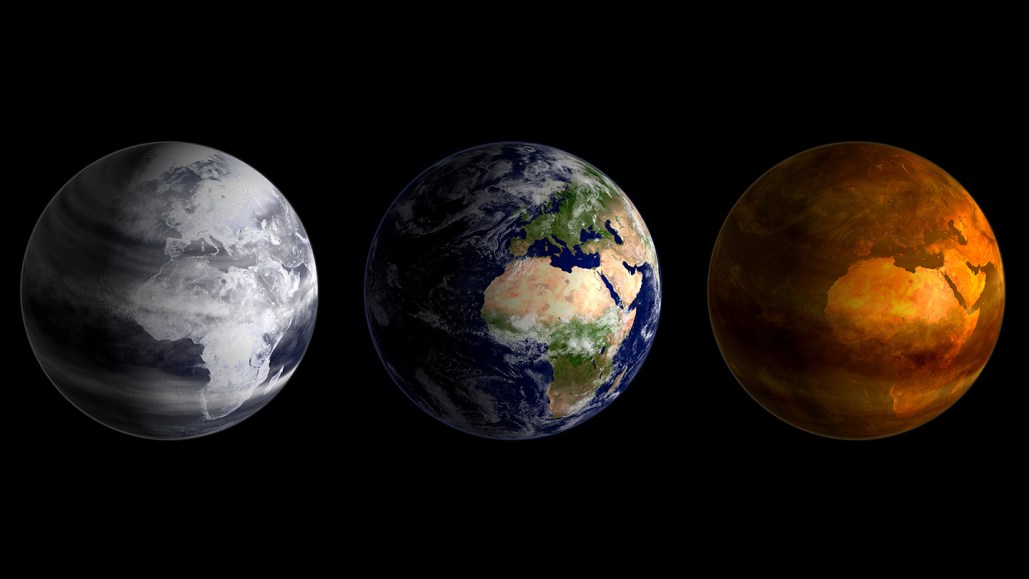Earth’s Ancient ‘Greenhouse’ Periods Were Hotter Than Previously Estimated

Over the last 485 million years, Earth has been both a lot colder and a lot hotter than once thought.
A new temperature timeline that combines geologic data with computational simulations reveals a rich, detailed and dramatic picture of the ebb and flow of icehouse and greenhouse conditions on Earth throughout this span of time, which includes most of the Phanerozoic Eon. The timeline shows Earth’s average temperature dropping to as low as 11° Celsius and rising to as high as 36° C, researchers report in the Sept. 20 Science.
Previous computer simulation-based reconstructions of temperatures during this span reported a range of about 14° C to 26° C.
These temperature shifts, surprisingly, also closely tracked shifts in atmospheric carbon dioxide, eclipsing other factors such as changing solar irradiance in driving Earth’s temperatures.
Researchers with Washington, D.C.’s Smithsonian National Museum of Natural History began piecing together the timeline in 2018 for the museum’s new “Deep Time” fossil hall. But a persistent puzzle appeared, says Emily Judd, a paleoclimatologist formerly with the Smithsonian.
Previous studies using multiple methods to estimate ancient greenhouse temperatures tended to track warmer than computer simulations alone for the same episodes. It turned out, the team found, that this underestimation of past warm periods extended to the entire Phanerozoic. In particular, Earth’s tropics were much warmer during these episodes than scientists previously thought.
The reconstructions also add context to Earth’s current warming trend. Right now, the planet’s average temperature is about 15° C (59° Fahrenheit), suggesting that it is in a relative icehouse condition.
But this doesn’t mean current human-caused global warming isn’t a dire concern, Judd says. It “has kept me awake at night. I’m worried that climate deniers and climate skeptics and climate delayers will point to this and say, ‘See! We have nothing to worry about.’”
And that line of thinking “neglects the most important aspect of the climate crisis, which is rate – how fast CO2 and temperature change,” she adds. Over the past 2,000 years, Earth has been heating up at breakneck speed (SN: 7/24/19). Organisms can adapt to big, gradual change. But “when CO2 values and temperatures change rapidly, organisms cannot keep pace.”
That includes humans, who evolved to tolerate colder conditions and tend to live close to sea level. “Earth’s resilience does not directly translate to our own ability to adapt and thrive in the face of human-caused climate change.”




